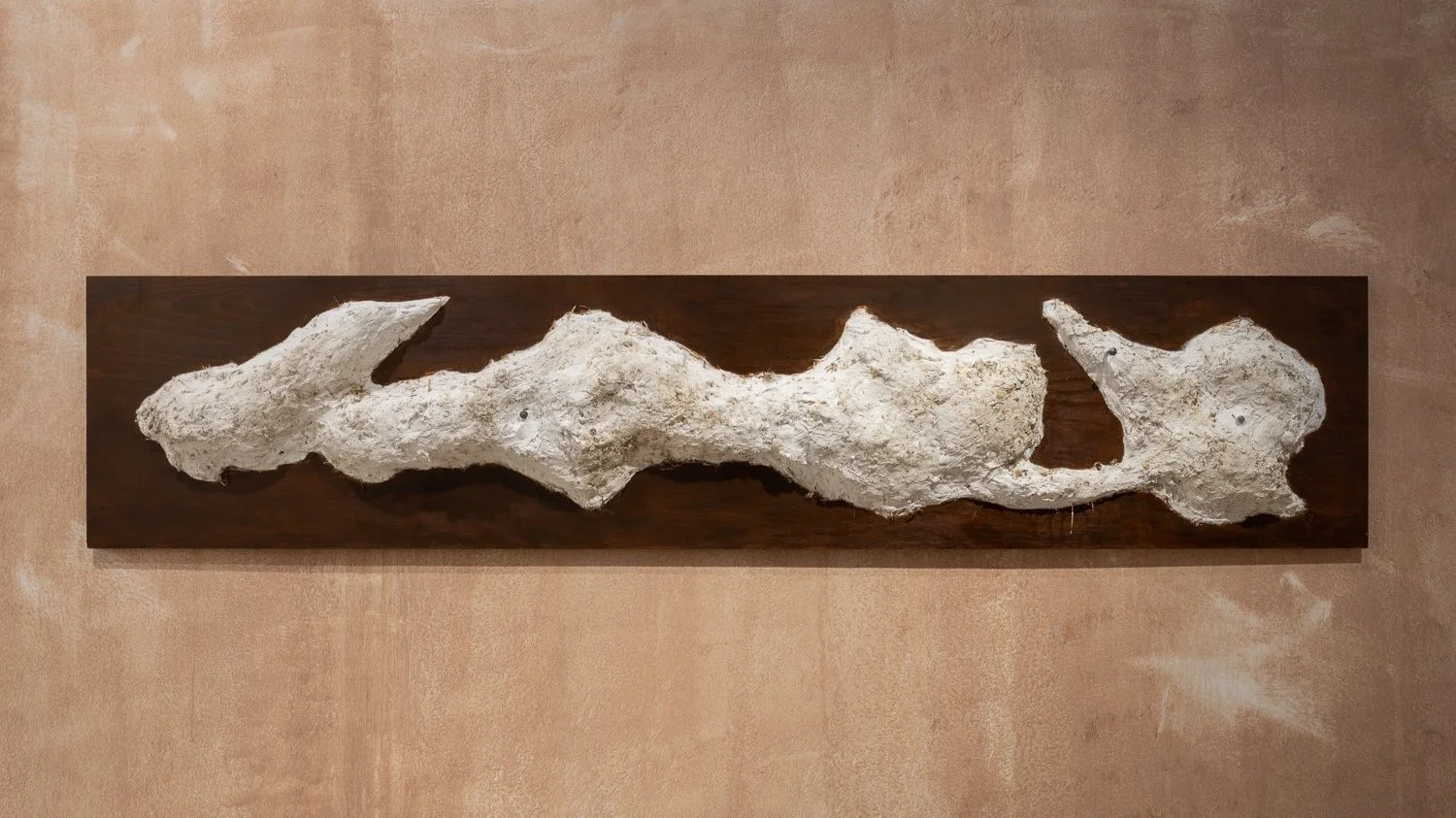A Lake as Great as Its Bones
Emii Alrai
A Lake as Great as Its Bones
18 July – 7 September 2024
Maximillian William is pleased to present a solo exhibition of new works by Emii Alrai. A Lake as Great as Its Bones takes its name from Lake Nemi, a volcanic crater south of Rome that the artist encountered during her residency at the Villa Medici in 2023. Drawing from the lake’s great history of shipbuilding, scuttling, excavation and destruction, the installation blends ceramics, metalwork, and sculpture to build a world that gathers fictions, fragments, and traces of an inconclusive past.
For her first exhibition with the gallery, Alrai continues her investigation of material histories that reference archaeological sites and museum displays. She works with gold, pewter, silver, copper, and clay: materials with an embedded hierarchy that were used on the palace-like boats built on Lake Nemi in the 1st century AD. In a new series of drawings, Alrai uses bitumen to depict topographies reminiscent of the ancient landscapes around Lake Nemi. Bitumen is naturally found in the mud at the bottom of lakes, and in these drawings, the artist conjures gestures of unearthing what has been buried. In the same vein, sculptures are assembled across the gallery as artefacts from antiquity. Indefinite polystyrene forms are treated with gypsum and bitumen paint to summon scarred terrains or the clay bed of lakes, while ceramic vessels appear dredged up. A Lake as Great as Its Bones evokes material poetries that signal no definitive history, but a romanticised memory of the past.
In mapping the gallery space, Alrai appropriates museological structures—vitrines and partition walls—to mirror how museums control both bodies in space and the subsequent consumption of the narratives on display. The works probe a subtle critique of Western museology in their subversion of value through scale and material palette. Terracotta pots remain unfired, scaled up to almost half of human size, and towering arches are built from polystyrene, a cost-effective substance the artist describes as ‘deathless.’ Gold scythes are rendered in miniature, and wall panels, inspired by stucco reliefs seen throughout Rome, are mounted on ply stained to look like teak or walnut. Throughout the installation, Alrai questions where value is placed and why, and tenuous relationships between truth and fiction are embraced. ‘We are so desperate to weave through these crumbled things, a sense of identity, nostalgia, yearning, and imagination,’ Alrai notes. As we traverse through a realm of her making, she positions herself as an unreliable narrator, forging remnants from an imagined landscape and troubling our reverence for unknowable histories.
WORKS



























